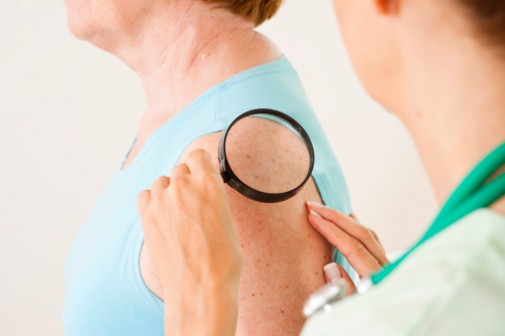More moles could mean higher breast cancer risk

Raising awareness of breast cancer is highlighted in October, but breast health should be talked about all year-long. Two studies published in the journal PLOS Medicine reported that women with many moles may have a higher risk of breast cancer.
The study followed about 75,000 participants for 24 years to determine whether or not moles are an indicator of hormone levels and can therefore be used to predict breast cancer risk.
The research showed that women with increasing numbers of moles were more at risk for breast cancer. Specifically, women with 15 or more moles on one arm had an 11.4 percent risk of developing breast cancer while women without any moles only had an 8.48 percent risk of having breast cancer.
“The authors of this study point out the connection between the number of cutaneous nevi (moles) and a woman’s estrogen levels, and found an interesting association,” says Dr. Heidi Memmel, breast surgeon for Advocate Medical Group in Park Ridge, Ill. “More cutaneous nevi are associated with higher estrogen levels, and increased risk of breast cancer.”
Researchers say the study proved a “significant positive association” between the number of moles and breast cancer risk, but the findings did not show that moles cause breast cancer. The study simply showed that breast cancer risk and mole development may share a hormonal link.
While the study reported significant findings, authors of the study say more research is needed as the study only included white participants. Additionally, participants self-reported the data used in the study leaving more room for error.
“We’ve known for years that women who begin their periods at a younger age, have children later, and who go through menopause later in life are at increased risk of developing breast cancer,” Dr. Memmel says. “If we have another reliable method to estimate a woman’s risk of developing breast cancer, we can improve our options for risk reduction, such as minimizing exogenous hormone use, maintaining a healthy body weight, regular exercise, healthy diet, and low alcohol consumption.”
Even if you don’t count more than 15 moles on one arm, it’s important to have regular appointments with your dermatologist. Also, become familiar with your risk factors for breast cancer and commit to proper breast health, including breast self-exams and routine screenings.
Related Posts
Comments
One Comment
About the Author
health enews staff is a group of experienced writers from our Advocate Health Care and Aurora Health Care sites, which also includes freelance or intern writers.


















I think this is an interesting study. I actually do have a lot of moles as well as the three other risk factors mentioned and was diagnosed with breast cancer a little less than 2 years ago. I would be curious as to why having a lot of moles is associated with higher estrogen levels. Although this does not help me prevent breast cancer, I hope that this information will be discussed with women at their yearly doctor’s visits so they can be more proactive about their breast health and risks for breast cancer.